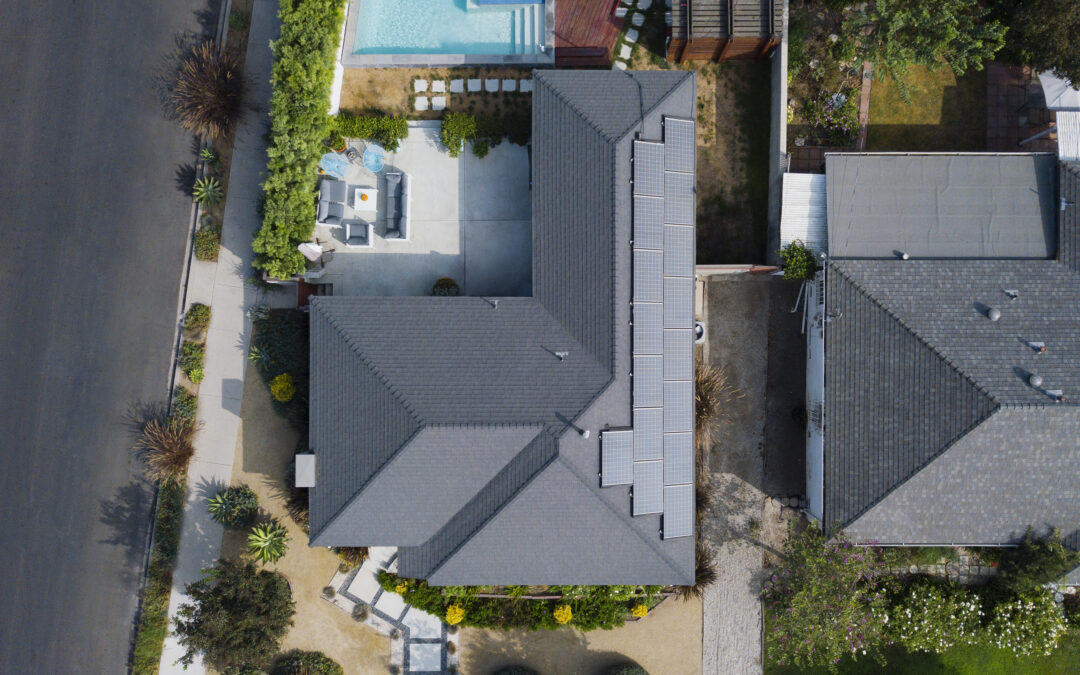As electricity rates continue to rise, homeowners across Southern California are seeking ways to reduce costs and manage their energy usage. While going solar is one of the most effective long-term solutions, there are several steps you can take right now to lower your electricity bill. These changes not only help you save money immediately but also prepare your home to maximize the benefits of solar power later on.
Here are 10 practical and proven ways to lower your electric bill before going solar.
1. Brighten your home with LED Lighting
Lighting makes up about 10–15% of a typical home’s energy use. Replacing outdated incandescent or CFL bulbs with LED bulbs can cut lighting energy consumption by up to 75% and last 25 times longer, as per the U.S. Department of Energy.
2. Unplug Energy Vampires
Many devices continue to draw power even when they’re turned off. Common culprits include phone chargers, gaming consoles, and kitchen appliances with digital displays. According to the Lawrence Berkeley National Laboratory, “standby power” can account for 5-10% of your home’s energy usage. Use power strips or smart outlets to cut off this wasted energy.
3. Take Control of Your Thermostat

Heating and cooling often account for nearly half of your electric bill. Setting your thermostat back 7–10°F for eight hours a day can save around 10% per year on heating and cooling, according to the DOE. Smart thermostats can make these adjustments automatically and deliver measurable savings.
4. Seal Air Leaks and Add Insulation
Poor insulation and drafty windows or doors force your HVAC system to work harder. Sealing leaks with weatherstripping and adding insulation to your attic or walls can reduce bills by up to 10% annually. Weatherization programs consistently highlight air sealing and attic insulation as the most cost-effective upgrades.
5. Upgrade to Energy-Efficient Appliances
Older refrigerators, washers, and dishwashers often use far more energy and water than today’s models. Upgrading to newer, high-efficiency appliances can significantly reduce your monthly utility costs while improving performance. In fact, recent federal efficiency standards show that modern refrigerators, air conditioners, and water heaters can save households over $100 per year per appliance compared to outdated models, and the savings multiply when you replace several appliances in your home.
6. Use Ceiling Fans Strategically
Ceiling fans use far less energy than air conditioners. In summer, set blades to spin counterclockwise to create a cooling breeze, allowing you to raise your thermostat by about 4°F without losing comfort. In winter, switch to clockwise rotation on low speed to push warm air back down into the living space.
7. Wash Clothes in Cold Water
Water heating alone accounts for nearly 18% of home energy consumption. To reduce costs, set your water heater to 120°F, hot enough for daily needs but more efficient and safer. Adding insulation to your tank and hot water pipes further reduces heat loss. Laundry habits also make a difference: heating water accounts for up to 90% of a washing machine’s energy consumption, and switching most loads to cold cycles can save households more than $150 per year, depending on usage and rates. If your water heater is more than a decade old, upgrading to a modern high-efficiency model can add even greater long-term savings.
8. Maximize Natural Light and Shade
Making the most of natural light during the day reduces your reliance on electric lighting and keeps rooms brighter without additional energy use. At the same time, managing sunlight is key to controlling indoor temperatures. In warmer months, closing blinds or curtains during peak afternoon sun helps keep your home cooler and lowers the demand on air conditioning. Longer-term improvements, such as planting shade trees near south-facing windows or installing reflective window film, can cut cooling costs by up to 25%.
9. Take Advantage of Off-Peak Hours

Some utilities, like Southern California Edison, offer Time-of-Use (TOU) plans that charge less during off-peak hours. It is possible to save more than $00.20 per kWh! Running your dishwasher or laundry at night or on weekends can help you save on SCE Time-of-Use Plans. For households with electric vehicles, charging during off-peak windows can deliver even greater savings, since EVs draw significant power. Scheduling your vehicle to charge overnight not only reduces costs but also helps ease demand on the grid during high-usage periods. With a little planning, shifting energy use to off-peak hours can make a measurable difference in your monthly bill.
10. Monitor Your Energy Use
Knowledge is power when it comes to reducing energy costs. A study by the American Council for an Energy-Efficient Economy (ACEEE) shows that households using real-time energy feedback tools save an average of 4–12% on their electricity. (With some people saving as much as 25%)! Many utility companies now provide free apps or dashboards that show how and when you’re using the most electricity.
Preparing Your Home for Solar
Implementing these energy-saving tips not only reduces your electric bill today but also sets your home up for solar success in the future. When your home is more efficient, your solar system doesn’t need to be as large to cover your needs, which can reduce your upfront investment and improve your long-term savings.
Final Thoughts
Lowering your electric bill doesn’t have to mean sacrificing comfort. Small changes in your habits, along with smart upgrades to your home, can create big results. And when you’re ready to take the next step, solar energy can lock in even greater savings while reducing your reliance on the grid.
At OC Solar, we help homeowners like you make the transition to clean energy as smooth and cost-effective as possible. Contact us today to schedule a free consultation and learn how solar can maximize the savings you’ve already started.

